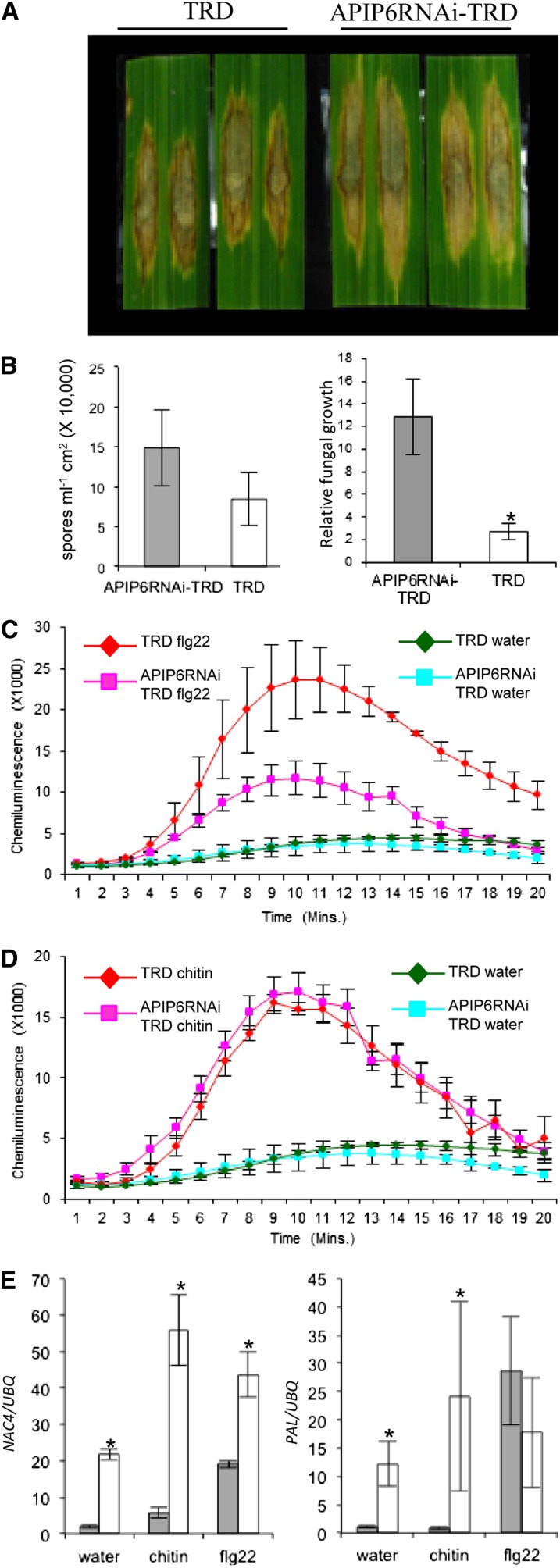Figure 7.
Responses of APIP6 RNAi Plants to Blast Infection and PAMP Elicitor Treatments.
(A) Punch inoculation of the APIP6 RNAi and segregated wild-type TRD plants. Leaves of 6-week-old rice plants were inoculated with the virulent isolate RB22. The leaves were photographed 10 DAI.
(B) Sporulation (left) and relative fungal growth [2 [CT(OsUBQ) − CT(MoPot2)] × 100] (right) were measured 10 d after punch inoculation. Values are the means of three replications, and error bars represent the se (n = 8; *P value < 0.05).
(C) Measurement of the flg22-induced ROS burst. Leaf disks from the APIP6 RNAi and the control plants were treated with 100 nM flg22 and water. ROS were detected with a luminol-chemiluminescence assay. Error bars represent the se (n = 3).
(D) Measurement of chitin-induced ROS burst. Leaf disks from the APIP6 RNAi and the control plants were treated with 8 nM chitin (hexa-N-acetyl-chitohexaose) and water. ROS were detected with a luminol-chemiluminescence assay. Error bars represent the se (n = 3).
(E) Induction of the defense-related genes NAC4 (1 h after incubation) and PAL (3 h after incubation) in water, chitin, or flg22. Gray bars indicate APIP6 RNAi plants, and white bars indicate the control plants. qPCR was performed with gene-specific primers. Values are the means of three replications, and error bars represent the se (n = 3; *P value < 0.05).

